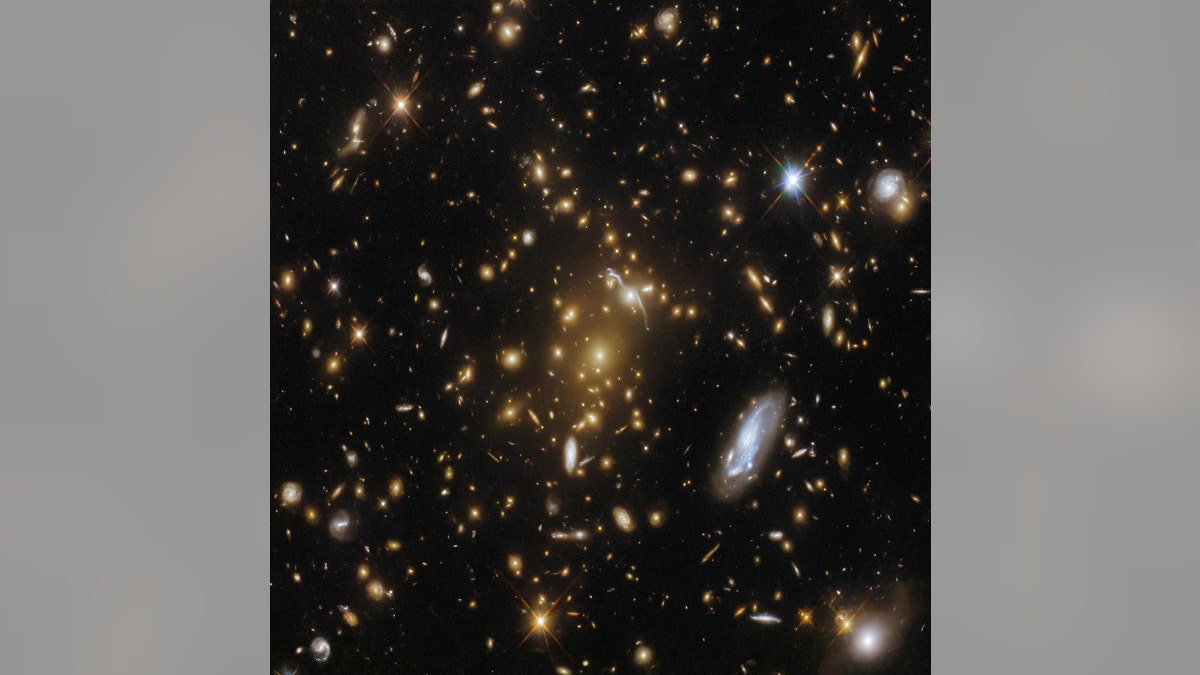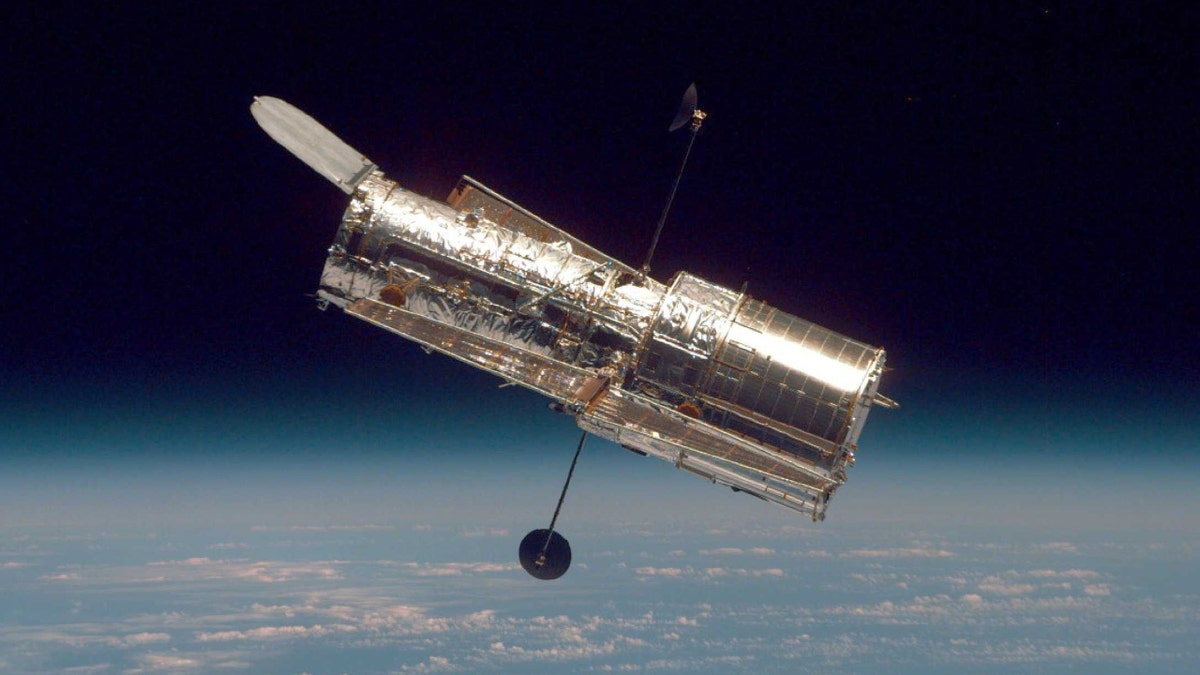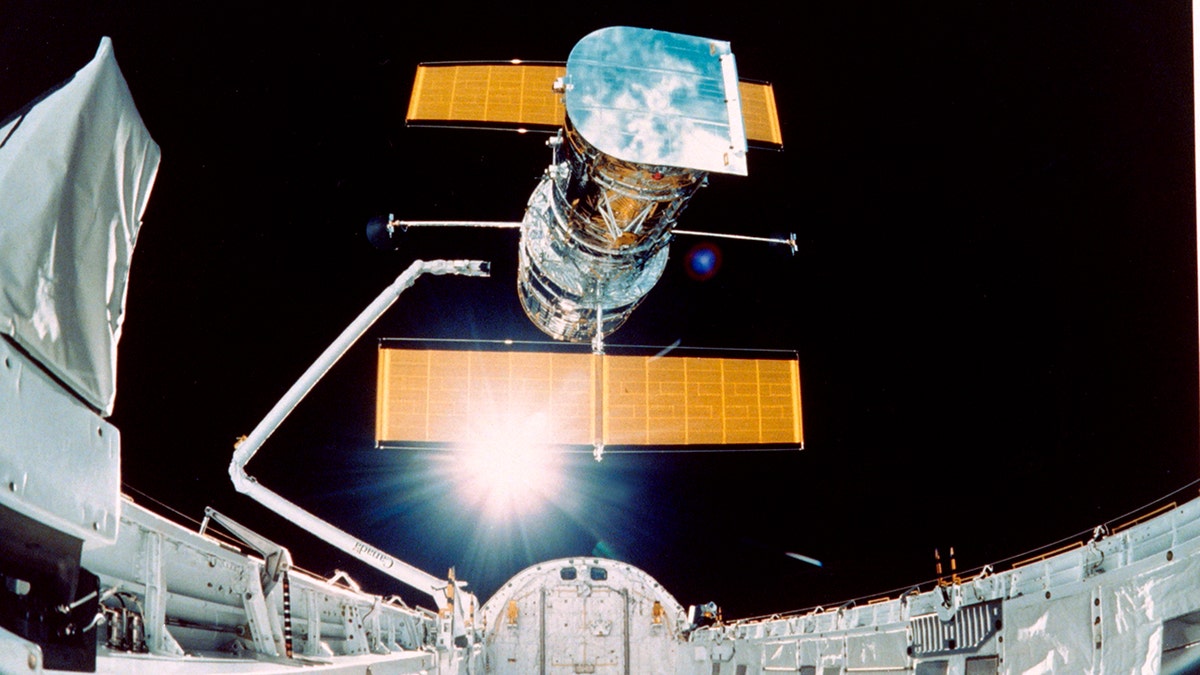The Hubble Space Telescope was deployed on this day in history, April 25, 1990
The Hubble Space Telescope reached space aboard Space Shuttle Discovery — and soon began transmitting spectacular images back to Earth of the mysteries of the universe.
NASA's Hubble Space Telescope peered into the center of a vast galaxy cluster in a beautiful new image.
The European Space Agency (ESA) said the cosmic giant – called eMACS J1823.1+7822 – can be identified by the distortions in space-time surrounding it.
The mass of the cluster has caused the images of background galaxies to be gravitationally lensed.
Gravitational lensing occurs when a celestial object has such a massive gravitational pull that it warps time and space around it, bending the light from a more distant object and magnifying it.
WEBB TELESCOPE SNAPS SHOT OF FIRST ASTEROID BELT EVER SEEN OUTSIDE THE SOLAR SYSTEM

A cluster of large galaxies, surrounded by various stars and smaller galaxies on a dark background. The central cluster is mostly made of bright elliptical galaxies that are surrounded by a warm glow. Close to the cluster core is the stretched, distorted arc of a galaxy, gravitationally lensed by the cluster. (Credit: ESA/Hubble & NASA, H. Ebeling)
The agency said the cluster had caused a sufficient curvature of space-time to bend the path of light and cause background galaxies to appear distorted into streaks and arcs of light.
Other galaxies can be seen surrounding the cluster, as well as foreground stars with signatory diffraction spikes.
The galaxy cluster lies nearly 9 billion light-years away in the constellation Draco.

In this handout from NASA, the Hubble Space Telescope drifts through space in a picture taken from the Space Shuttle Discovery during Hubble's second servicing mission in 1997. ((Photo by NASA via Getty Images))
It is one of five clusters explored by the telescope, with the aim of measuring the strengths of these gravitational lenses and gaining a better understanding of the distribution of dark matter in galaxy clusters.
NEW JERSEY POLICE INVESTIGATE POSSIBLE METEORITE THAT CRASHED INTO HOME
"Strong gravitational lenses like eMACS J1823.1+7822 can help astronomers study distant galaxies by acting as vast natural telescopes which magnify objects that would otherwise be too faint or distant to resolve," the ESA explained.

Picture taken by the STS-31 crew aboard the Space Shuttle Discovery showing the Hubble Space Telescope being deployed on April 25, 1990, from the payload bay. (Photo by -/NASA/AFP via Getty Images)
The image includes data from eight different filters and Hubble's Advanced Camera for Surveys and Wide Field Camera 3.
Both of the instruments are able to view astronomical objects in just a small slice of the electromagnetic spectrum using filters, which enable scientists to capture objects at precisely selected wavelengths.
CLICK HERE TO GET THE FOX NEWS APP
Combining observations at different wavelengths allows astronomers to see a more complete picture of an object than just visible light.





















